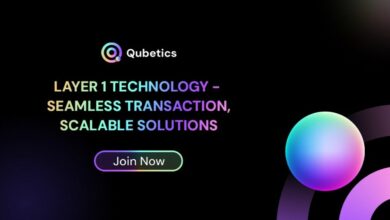How to Conduct Effective User Research as a UI/UX Designer

User research is a cornerstone of effective UI/UX design. Understanding user needs, behaviors, and motivations helps designers create products that are both functional and delightful. In this article, we will explore the steps and methods for conducting user research, providing actionable insights for UI/UX designers to apply in their projects.
Understanding the Importance of User Research
User research is essential because it grounds the design process in real-world insights rather than assumptions. By engaging with users directly, designers can uncover pain points, preferences, and behaviors that inform the design decisions. This leads to products that are more user-friendly and effective in meeting user needs.
Benefits of User Research
Informed Decisions:
Data-driven insights help make more accurate design choices.
User-Centric Designs:
Ensures the product meets actual user needs.
Increased Usability:
Identifies usability issues early in the design process.
Better ROI:
Reduces costly redesigns by getting it right the first time.
Defining Research Goals
Before diving into user research, it’s crucial to establish clear research goals. These goals should align with the overall objectives of the project and provide a roadmap for what you hope to achieve with your research.
Setting Clear Objectives
Identify Problems:
Understand what issues users are facing with current solutions.
Explore Opportunities:
Find gaps in the market that your design can fill.
Understand User Needs:
Gain deep insights into user preferences and behaviors.
Validate Assumptions:
Test the validity of design hypotheses.
Choosing the Right Research Methods
There are various user research methods available, and the choice depends on your research goals, timeline, and resources. Here, we’ll discuss some of the most common methods used in UI/UX design.
Qualitative Methods
Qualitative research focuses on understanding user behaviors and motivations through in-depth analysis.
User Interviews
User interviews involve one-on-one conversations with users to gather detailed information about their experiences and needs.
Advantages:
Provides deep insights, allows for follow-up questions.
Disadvantages:
Time-consuming, requires skilled interviewers.
Usability Testing
Usability testing involves observing users as they interact with your product to identify usability issues.
Advantages:
Direct feedback on usability, reveals pain points.
Disadvantages:
Can be costly, requires a controlled environment.
Quantitative Methods
Quantitative research focuses on numerical data and statistical analysis.
Surveys
Surveys involve asking users a set of predefined questions to gather large amounts of data.
Advantages:
Scalable, cost-effective.
Disadvantages:
Limited depth, potential for biased responses.
Analytics
Analytics involves tracking user behavior through data from web or app usage.
Advantages:
Real-time data, identifies trends.
Disadvantages:
Requires technical setup, can be impersonal.
Recruiting Participants
Finding the right participants for your user research is crucial to obtaining relevant and accurate data. Participants should represent your target user base.
Strategies for Recruiting Participants
Screening Surveys:
Use surveys to filter out participants who match your criteria.
Incentives:
Offer incentives such as gift cards or discounts to encourage participation.
Recruitment Agencies:
Consider using professional services to find participants.
Sample Size Considerations
Small Sample:
For in-depth qualitative research, a smaller sample size (5-10 users) can be sufficient.
Large Sample:
For quantitative research, aim for a larger sample size to ensure statistical significance.
Conducting Research
Once you have your participants, it’s time to conduct the research. This step involves executing the chosen methods and gathering data.
Preparing for Research
Create a Plan:
Outline the steps and timeline for your research.
Develop Materials:
Prepare interview guides, surveys, and other necessary materials.
Set Up Environment:
Ensure your research environment is conducive to gathering accurate data.
Executing Research
Moderate Effectively:
For interviews and usability tests, guide the session without leading the participant.
Record Data:
Take detailed notes and record sessions (with consent) for later analysis.
Be Adaptable:
Be ready to adapt your approach based on participant responses.
Analyzing Data
After gathering data, the next step is to analyze it to draw meaningful insights. This involves organizing the data, identifying patterns, and synthesizing findings.
Qualitative Analysis
Transcription:
Transcribe interviews and usability test sessions.
Thematic Analysis:
Identify themes and patterns in the data.
Affinity Mapping:
Use affinity diagrams to group related findings.
Quantitative Analysis
Data Cleaning:
Ensure your data is clean and free of errors.
Statistical Analysis:
Use statistical methods to analyze survey and analytics data.
Visualization:
Create charts and graphs to represent the data visually.
Reporting Findings
Communicating your findings effectively is crucial to ensure they inform the design process. This involves creating a clear and concise report that highlights key insights.
Structuring Your Report
Executive Summary:
Provide a high-level overview of the findings.
Methodology:
Describe the research methods used.
Key Insights:
Highlight the most important findings.
Recommendations:
Provide actionable recommendations based on the research.
Presenting Findings
Visual Aids:
Use charts, graphs, and other visuals to make the data more accessible.
Storytelling:
Tell a compelling story that connects the findings to user needs and design decisions.
Stakeholder Engagement:
Present the findings to stakeholders and engage them in discussions about the implications for the design.
Applying Insights to Design
The ultimate goal of user research is to inform the design process. This step involves translating research findings into design decisions and improvements.
Iterative Design Process
Ideation:
Use insights to brainstorm new ideas and solutions.
Prototyping:
Create prototypes to test design concepts.
User Testing:
Continuously test and refine designs based on user feedback.
Collaboration and Feedback
Team Collaboration:
Work closely with other team members to integrate research findings into the design.
User Involvement:
Involve users throughout the design process to ensure the product meets their needs.
Continuous Improvement
User research is not a one-time activity but an ongoing process. Continuous research helps keep the design aligned with evolving user needs and market trends.
Ongoing User Research
Regular Testing:
Conduct regular usability tests and surveys to gather ongoing feedback.
User Feedback Loops:
Implement mechanisms for users to provide feedback continuously.
Stay Updated:
Keep up with industry trends and user behavior changes to inform your research.
Measuring Success
KPIs:
Define key performance indicators to measure the success of your design.
User Satisfaction:
Regularly measure user satisfaction through surveys and feedback.
Analytics:
Use analytics to track user behavior and identify areas for improvement.
Conclusion
Effective user research is the foundation of successful UI/UX design. By understanding user needs, behaviors, and motivations, designers can create products that are both functional and delightful. From defining research goals to applying insights to the design process, each step is crucial in ensuring the end product meets user expectations. Remember, user research is an ongoing process that requires continuous effort and adaptation to keep up with evolving user needs and market trends. By committing to a user-centric approach, UI/UX designers can create products that truly resonate with their audience.





